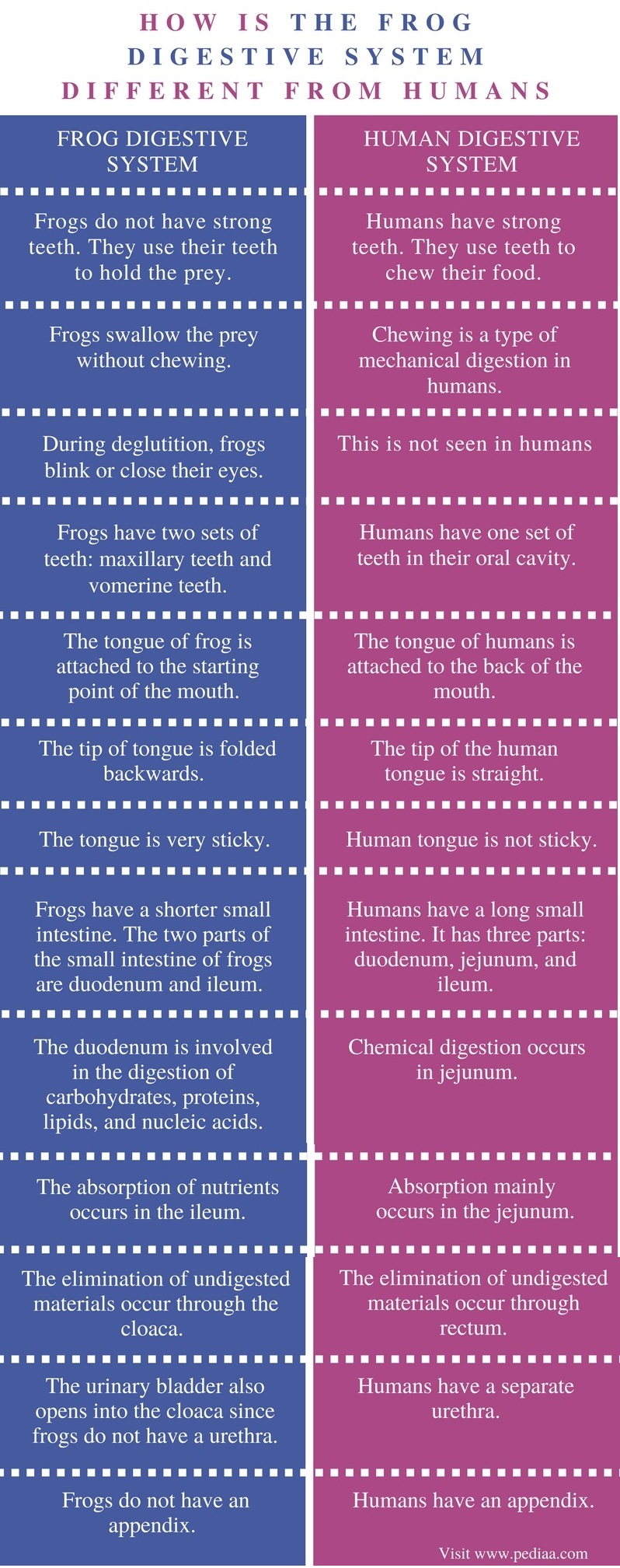

It is believed that the dislodging of the tongue is the result of an abrupt flow of squeezed lymph that is contained within the lymph sac. The tongue may protrude and then retracted abruptly to engulf and catch insects.Digestive enzymes are not produced by mucous glands, nor by the taste buds.The surface of the tongue contains taste buds, which form tiny papillae as well as mucous glands of which secretions make the tongue sticky.the posterior portion is bifid, and free. The anterior part of it is connected to the inner part of the jaw’s lower border.It is located near the base of the mouth oral cavity.


The tongue of frogs is massive, sticky, strong and protruding.The buccal cavity consists of two passageways – the internal or posterior nasal cavities, through which breathing gases flow to and out of the buccal cavity during respiration. Its roof is located near the teeth of the vomerine.The teeth of frogs have to be replaced numerous times during their lifetime.ĭiagram of frog digestive system | Image Source: b.

They contain soft and nourishing pulp that is surrounded by connective tissues, blood vessels and nerves as well as odontoblasts creating new materials for tooth’s development. The tooth has an inner pulp cavity that opens to the sides.It is hard solid, glistening and resistant particle.Dentine is traversed by a number of fine canals, and it covers the top of the tooth. Thus, teeth aren’t intended to be chewed, they serve as a means of holding the prey in place and stopping it from sliding out.The base is attached by the jawbone, and contains bone-like material. Each tooth is conical in appearance and has two parts : the crown (front portion of the tooth) and the base.The teeth are curved inwards and is joined to bones instead of being attached to sockets. Teeth have a similar shape, and they are homodont.The upper jaw is adorned with rows of aligned even, small and hooked-like pointed teeth.These teeth aren’t utilized to chew, but rather to check the escape of the captured prey. Vomers also include two sets of teeth from the vomerine teeth.There are two additional tooth-like patches visible either side of the median line that forms the buccal cavity, also known as the vomerine teeth.It is however located in a row on each side of the premaxillae and maxillae bones that are located on the jaw’s upper. Upper jaws are fixed and the jaw below is movable and is able to move up and down to open and close the mouth.ĭiagram of frog digestive system | Image Source:.Both jaws are covered by impermeable lips. The two jaws of bony are located inside the mouth.It’s a large space that runs from one end of the snout to opposite. The alimentary canal begins at the mouth.The canal is a coiled long tube with different diameters, extending from the mouth and the cloaca. In frogs, the digestive canal is thought to be fully developed. Oesophagus is a narrow tube that is opened to the stomach, and then extends into the intestine, the rectum, and then finally it opens out through the Cloaca.The mouth is opened into the buccal cavity, which leads to the oesophagus via the pharynx.Lower jaws are completely devoid of teeth. In the same way, vomerine teeth are found in two groups with one on each side of the nostrils’ internals. A small row of pointed maxillary teeth can be located in the middle in the jaw’s upper region.The tongue disappears immediately and the mouth is closed. If the frog spots an insect, it flicks its tongue, and the insect is glued to the sticky tongue.
#FROG DIGESTIVE SYSTEM FREE#
It is attached in the front and free behind.


 0 kommentar(er)
0 kommentar(er)
